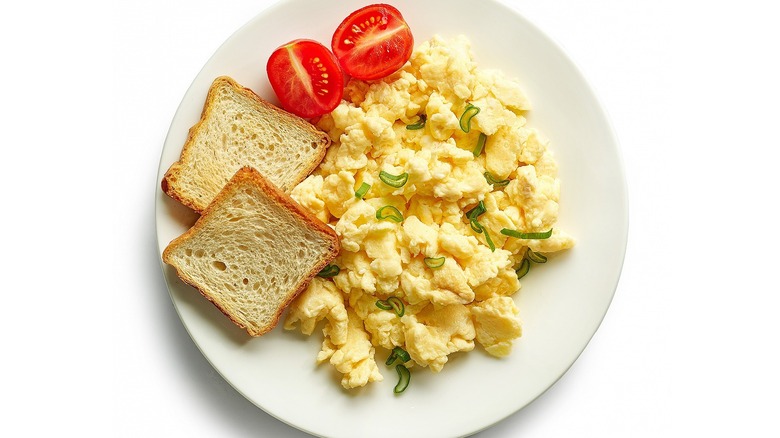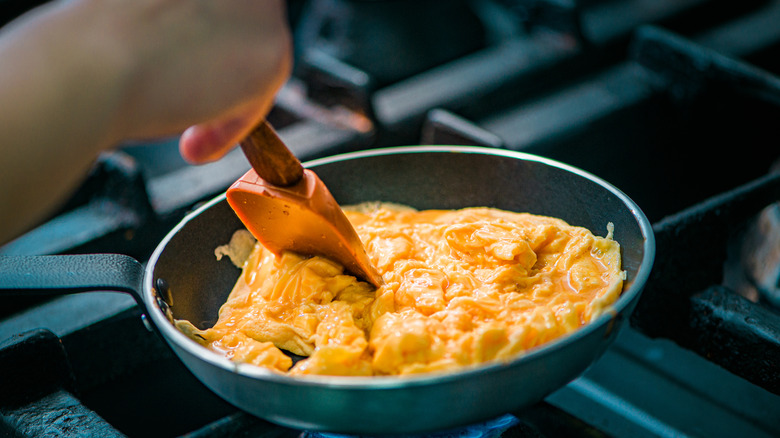The Difference Between French And American-Style Scrambled Eggs
Eggs can be deceptively tricky to nail, and each style of preparation can vary greatly, leading to unique textures and tastes. All scrambled eggs must be created equal, though, right? Wrong. Within this cooking method, several different techniques exist and tend to vary from country to country. For example, two of the main camps of cooking scrambled eggs are American-style and French-style — and they couldn't produce more different results.
In a YouTube video, Jamie Oliver outlined these techniques and described American scrambles as "diner-style eggs." They are typically cooked in frying pans with butter and slowly scraped to create individual sheets of omelet-like clouds. On the other hand, French scrambled eggs require a bain-marie or water bath, a method often used for melting chocolate. The double boiler produces a silkier, more liquidy result with smaller, solid curds. American-style eggs cook quickly because they are in direct contact with the heat source, but you'll have to wait longer for French scrambles. That said, is the wait worth it?
With so many things, it all comes down to personal preferences and tastes. For people who are used to classic American scrambled eggs, the ultra runny, small-curd French version may seem undercooked and give a bit of a knee-jerk ick reaction. However, many find that American sheets of eggs are too dry and lack texture and silkiness.
The pros and cons of each egg style
One thing to consider when choosing a technique is how much time you want to spend cooking breakfast. If you're craving a quick bite, you can't go wrong with American-style since they cook in a few minutes. For French-style scrambles, you have to bring water to a boil to create your double boiler before cooking the eggs, then whisk the eggs almost constantly during the cooking process, which takes a while. Plus, you'll dirty a few more dishes with this method.
Jamie Oliver used a glass bowl in his demonstration, but using a metal bowl can produce faster results thanks to its conductivity properties. That said, some people think the luxurious texture of French eggs is worth the wait. One commenter wrote, "I saw this video about 2 months ago and have made the French style ever since then. It takes 90% attention and about 20 minutes time on a low heat (stirring almost constantly), but the eggs come out so creamy and so delicious it's worth the effort."
It's also of note that both of these recipes are very simple and use only eggs, salt, and butter. Other scrambled egg recipes might call for a splash of milk, black pepper, or cheese. If you want to follow celebrity chef Gordon Ramsay's scrambled egg recipe, use créme fraîche. Regardless of the technique you try, you can adapt these styles to your taste for the best-ever scrambled eggs.

